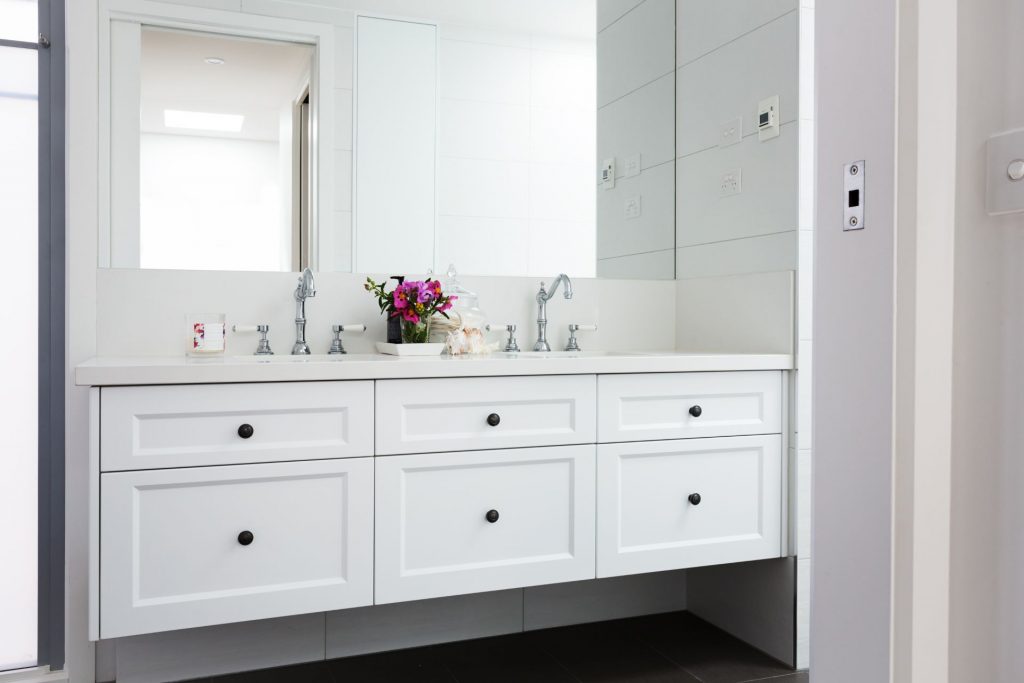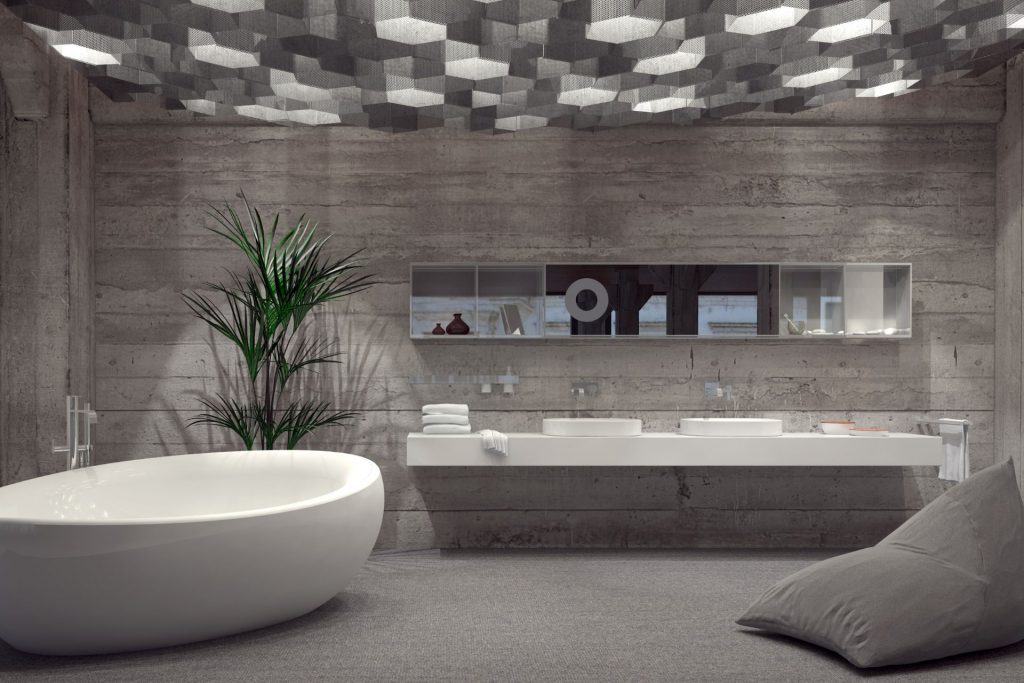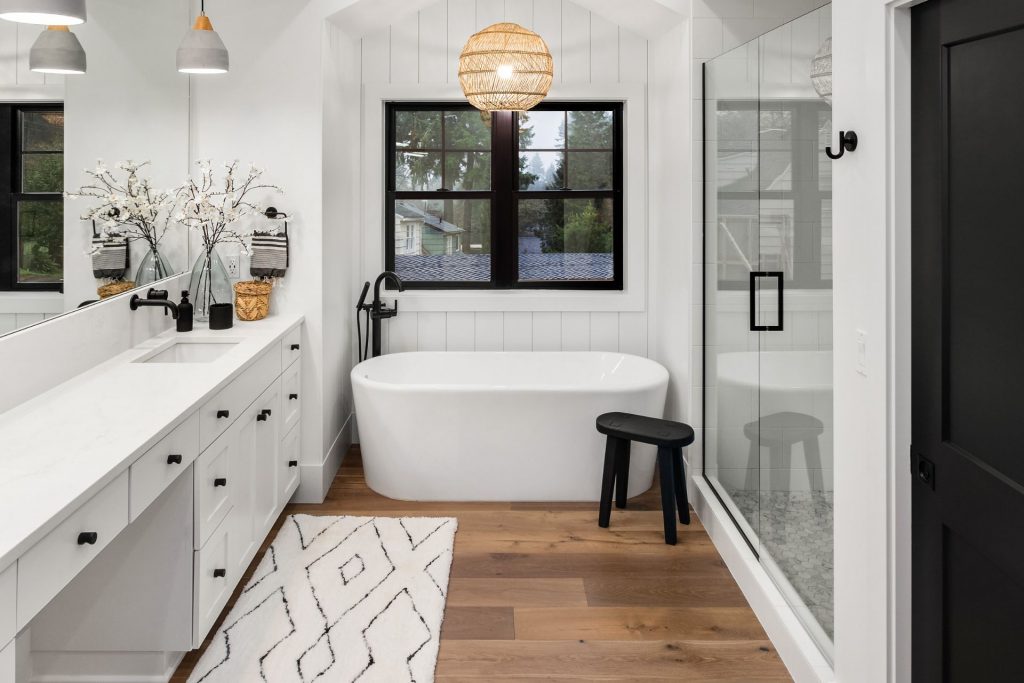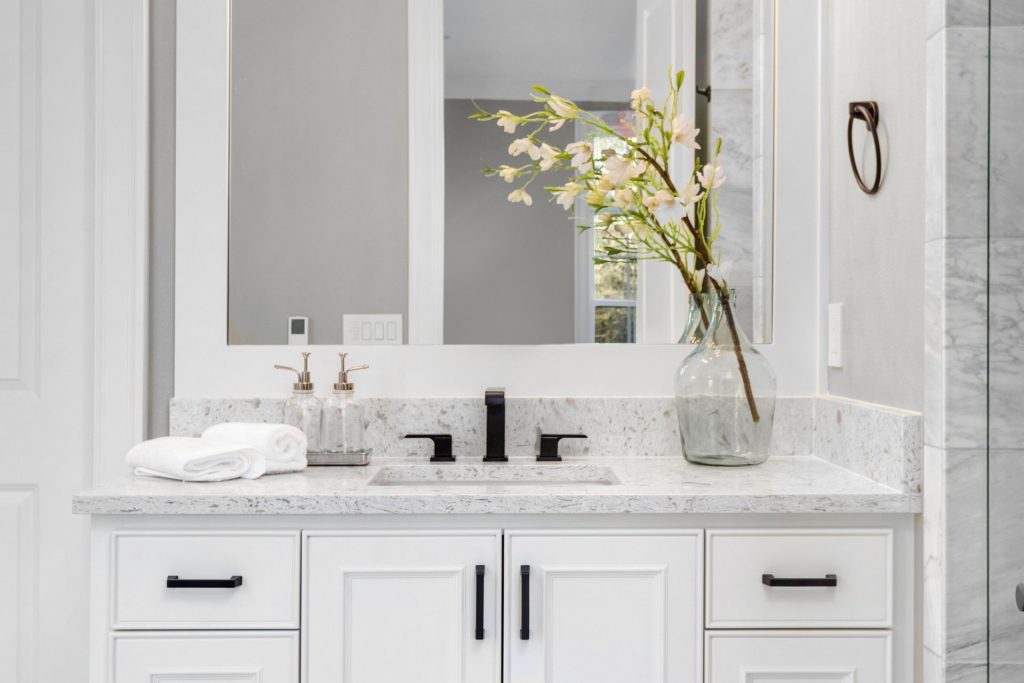When considering a bathroom remodel or renovation, one of the key elements often overlooked is the bathroom vanity height. Traditionally, the standard bathroom vanity height has ranged from 30 to 32 inches, but modern ergonomic designs recommend a height of 36 inches, commonly referred to as “comfort height,” to improve functionality and comfort. This height can be likened to that of most kitchen countertops. However, the ideal vanity height may vary based on individual preferences, bathroom size, and specific design elements. It’s not just about aesthetics; the height of your vanity can significantly affect its usability and the user’s comfort.

Vanity | Canva
Understanding Standard Bathroom Vanity Height Measurements
Understanding the key considerations in selecting the ideal bathroom vanity height can make the difference between a good and a great bathroom design. Let’s take a more in-depth look at these key considerations:
Ease of Use:
The primary factor to consider when choosing a bathroom vanity height is the comfort of the primary user. This isn’t merely about standing in front of the mirror, it extends to every activity related to the vanity, such as brushing teeth, washing hands, or applying makeup.
For instance, a vanity that’s too low may lead to excessive bending, causing back discomfort, especially for taller individuals. Conversely, a vanity that’s too high could be inconvenient for shorter people or children. Ideally, the user should be able to stand by the vanity with their arms in a comfortable, natural position.
Bathroom Size:
The size of your bathroom can also play a pivotal role in determining the height of your vanity. In smaller bathrooms, every inch of space matters. A vanity that’s too tall may overpower the room or hinder access to other fixtures, whereas a shorter vanity could offer a better flow and sense of space. However, this doesn’t mean you should compromise on comfort. The key is to strike a balance between the size of the bathroom, the available space, and the comfort of the user.
Vanity Design:
Lastly, the design of the vanity itself can influence the ideal height. The type of sink you select can add or subtract from the overall height. For instance, if you’re opting for a vessel sink, which sits atop the vanity, you may need to consider a slightly lower vanity height to ensure comfort and ease of use. Similarly, the type of storage solutions you opt for — drawers, shelves, cabinets — could influence the height, as they need to be easily reachable. The fixtures you choose, such as faucets and handles, should also be considered as they need to be comfortably accessible.

Vanity | Canva
Determining the Right Vanity Height for Comfort
How to determine the right vanity height for comfort largely depends on the user. For example, taller individuals might prefer a vanity height of 36 inches or more. By contrast, a shorter person might feel more comfortable with a vanity that’s closer to the original 30-inch standard.
Tips to Consider:
- User Height: Measure the distance from the floor to the user’s waist.
- Functionality: How will the vanity be used? For applying makeup or simply washing hands?
- Fixture Access: Ensure faucets and other fixtures are easily reachable.
Incorporating Vessel Sinks
A trending bathroom feature is the vessel sink. These basins sit atop the vanity, raising the effective height. Thus, bathroom vanity height with vessel sink considerations becomes crucial. Typically, the vanity might be reduced in height to compensate.
Comfort vs. Regular Vanity Height
There’s a noted difference between comfort height and regular vanity height. The difference between comfort height and regular vanity height usually spans a range of 2 to 4 inches, with comfort height being the taller option. It’s akin to the height of kitchen countertops.

Vanity | Canva
Weighing Your Options
Pros and cons of varying bathroom vanity heights can impact your decision:
Pros:
- Customization: Tailored to individual needs.
- Improved Ergonomics: Reduces strain on the back and neck.
- Modern Aesthetics: Offers a contemporary look.
Cons:
- Cost: Custom heights can be pricier.
- Resale Value: Non-standard heights might deter potential buyers.
- Retrofit Challenges: Adjusting existing plumbing can be complex.
Conclusion: Making the Right Choice with Bathroom Vanity Height
The bathroom vanity height shouldn’t be an afterthought in your bathroom remodeling project. The right height can provide both functionality and an aesthetic edge. Ensure your choice fits your needs and those of your family.

Vanity | Canva
FAQs about Bathroom Vanity Height
What is the most common bathroom vanity height?
The most common height ranges between 30 to 36 inches, with 36 inches being the newer “comfort height.”
Does vanity height include the sink?
Standard vanity height measurements often don’t account for vessel sinks. If using one, adjust the vanity height accordingly.
How can I customize my vanity height during a renovation?
Consult with your contractor or designer. They’ll guide based on user needs, bathroom size, and design preferences.

